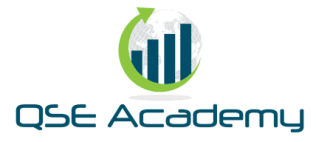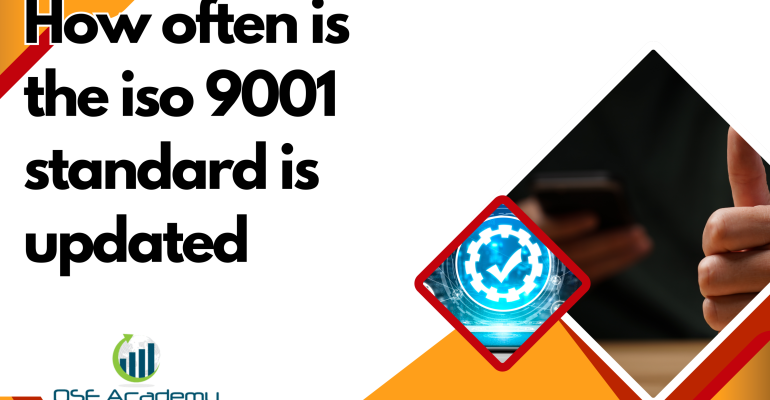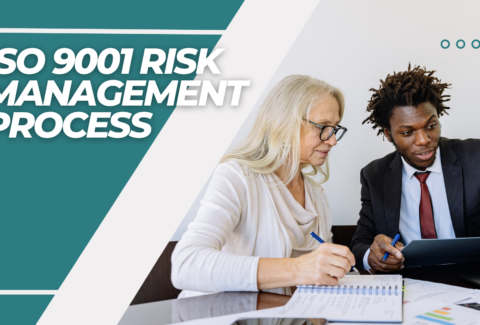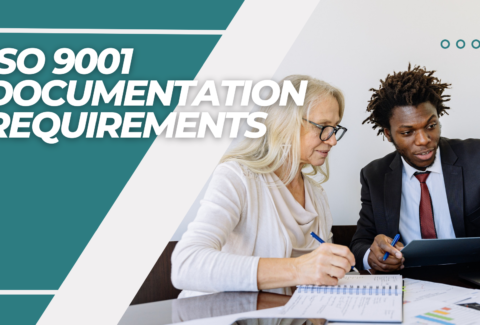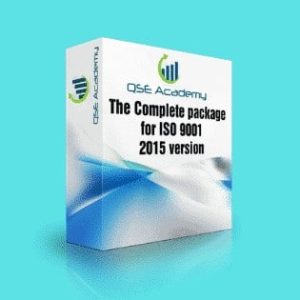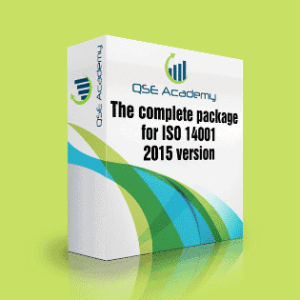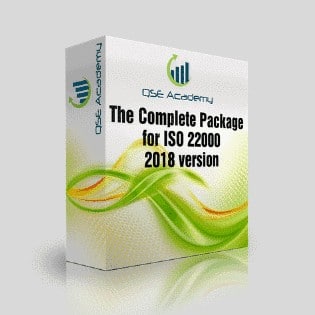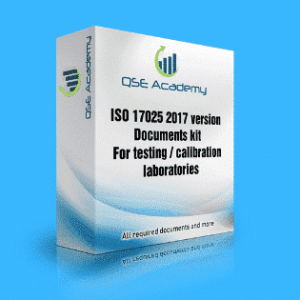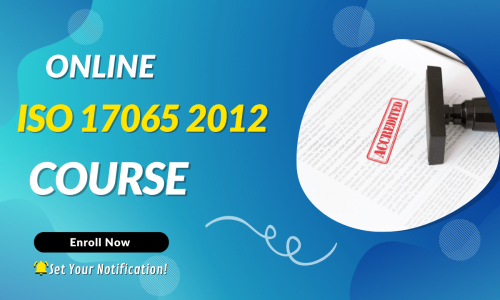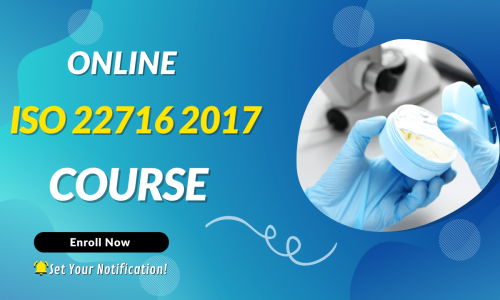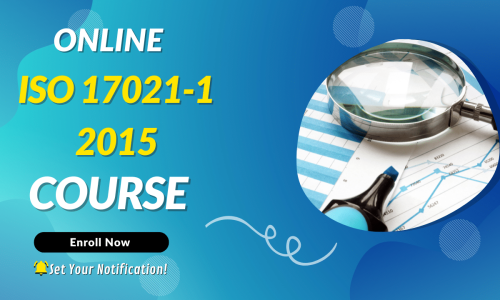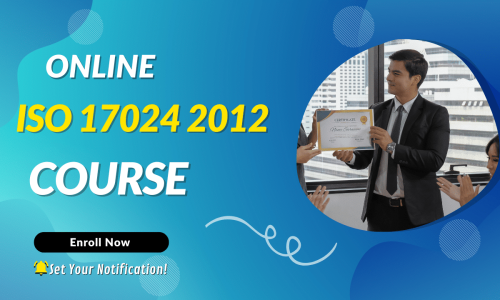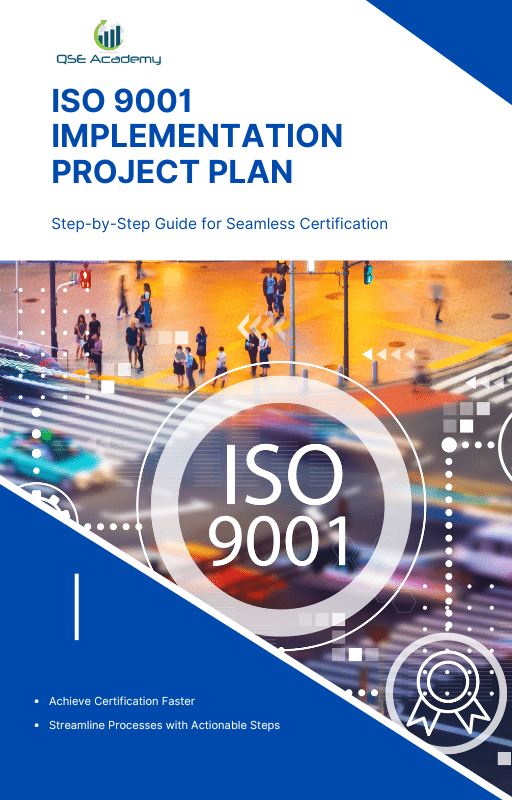How often is the iso 9001 standard is updated?
How often is the iso 9001 standard is updated?
If your organization uses ISO 9001 or you’re considering certification, you might be wondering, “How often is the ISO 9001 standard updated?” It’s a great question, and the answer is essential for anyone who wants to stay on top of quality management trends.
ISO 9001 is one of the most widely used standards in the world, helping businesses of all sizes improve their processes, deliver consistent quality, and enhance customer satisfaction. To ensure it stays relevant in an ever-changing world, the ISO 9001 standard is updated periodically. These updates reflect new technologies, evolving customer expectations, and shifts in global business practices.
In this article, we’ll explore how often the ISO 9001 standard is updated, why these updates are important, and how they impact organizations. By the end, you’ll have a clear understanding of the process and why staying informed about ISO 9001 revisions is key to maintaining a competitive edge. Let’s dive in!
Why Does the ISO 9001 Standard Need Updates?
You might be wondering, “Why does the ISO 9001 standard need to be updated in the first place?” The answer is simple: the world is constantly changing, and businesses need to adapt to stay competitive. By keeping the ISO 9001 standard updated, it ensures that organizations can continue to meet new challenges and expectations while maintaining the same high level of quality.
Keeping Up with Industry Changes
Think about how much has changed in the past few decades—new technologies, shifting customer demands, and the rise of digital transformation. If the ISO 9001 standard wasn’t updated regularly, it could quickly become outdated and less useful for today’s businesses. By keeping the ISO 9001 standard updated, it evolves alongside industries to stay practical and relevant.
For instance, when the 2015 revision introduced risk-based thinking, it reflected the growing need for businesses to proactively identify and manage risks in their operations. This change aligned with the realities of modern business, where agility and foresight are critical.
Aligning with Global Trends
The ISO 9001 standard is a global framework, meaning it has to work for organizations in every industry and country. Updates ensure that the standard stays consistent with global trends, like sustainability, technological innovation, and customer-centric approaches.
For example, when environmental concerns became a bigger focus in business, ISO 9001 updates encouraged organizations to consider their impact on the planet as part of their quality management practices. By keeping the ISO 9001 standard updated, it continues to promote global alignment and shared values across industries.
Driving Continuous Improvement
Another reason the ISO 9001 standard is updated is to encourage continuous improvement—one of its core principles. Businesses need to improve not just to survive, but to thrive in a competitive world. When the standard is revised, it pushes organizations to evaluate their processes and adopt new practices that can help them grow.
Regular updates to the ISO 9001 standard are not just about adding new requirements—they’re about refining the framework to make it more effective and easier to implement. This ensures businesses of all sizes and industries can benefit from it.
By keeping the ISO 9001 standard updated, it stays ahead of the curve, helping organizations meet current demands while preparing for the future. These updates ensure that ISO 9001 remains the gold standard for quality management. Now that we know why updates are essential, let’s explore how often the ISO 9001 standard is updated and what that process looks like!
How Often Is the ISO 9001 Standard Updated?
If you’re curious about how often the ISO 9001 standard is updated, you’re not alone! Many organizations want to stay ahead of changes to ensure their quality management system (QMS) remains relevant and effective. While there isn’t a fixed schedule for updates, there’s a general timeline and process that ISO follows to review and revise the standard.
Typical Update Timeline
The ISO 9001 standard is typically reviewed every five years by the International Organization for Standardization (ISO). This review process is designed to determine whether the standard still meets the needs of businesses and industries worldwide or if updates are required.
During this review, ISO gathers feedback from industry experts, certification bodies, auditors, and organizations using the standard. Based on this feedback, they decide whether to revise the standard, make minor updates, or leave it unchanged if it’s still effective.
For example, the most recent major revision of ISO 9001 occurred in 2015, introducing significant changes like risk-based thinking and greater flexibility for organizations. This came after the previous update in 2008, which focused more on refining existing requirements. The timeline reflects the ongoing effort to keep the ISO 9001 standard updated while giving businesses enough time to adapt to changes.
What Triggers an Update?
While the five-year review is standard practice, certain factors can prompt an update sooner or lead to more extensive revisions. Here are some common reasons why the ISO 9001 standard is updated:
- Evolving Business Needs: As industries evolve, so do the challenges businesses face. For instance, the rise of digital transformation and automation has led to new expectations for how organizations manage quality.
- Technological Advances: Innovations like AI, big data, and IoT have impacted how companies operate, prompting ISO to adjust the standard to reflect these advancements.
- Feedback from Users: ISO collects input from certified organizations, auditors, and stakeholders worldwide. If consistent issues or improvement opportunities are identified, they may influence updates to the standard.
A Quick Look at Past Updates
To understand how often the ISO 9001 standard is updated, let’s take a quick look at its history:
- 1987: The original ISO 9001 standard was published, focusing heavily on manufacturing and quality assurance.
- 1994: A revision emphasized the importance of documented procedures and quality system elements.
- 2000: A major overhaul introduced the process-based approach, shifting focus to customer satisfaction and continual improvement.
- 2008: Minor refinements were made to clarify requirements and improve compatibility with other management standards.
- 2015: The most recent major update brought risk-based thinking, leadership engagement, and a more flexible structure.
As you can see, the ISO 9001 standard is updated approximately every 7–8 years on average, with the review process happening every five years. Each revision builds on the last, ensuring it remains relevant and effective for businesses around the globe.
Knowing how often the ISO 9001 standard is updated can help your organization plan ahead and stay prepared for any changes. In the next section, we’ll discuss the types of changes that typically occur during these updates and how they impact businesses like yours. Keep reading!
What Changes Typically Occur When the ISO 9001 Standard is Updated?
Now that we know how often the ISO 9001 standard is updated, let’s talk about what actually changes during these updates. Each revision is carefully designed to ensure the standard stays relevant and practical for businesses of all sizes and industries. But what kind of changes should you expect? Let’s break it down.
1. Introduction of New Principles and Concepts
One of the key reasons the ISO 9001 standard is updated is to incorporate new ideas that reflect the evolving business landscape. For instance, the 2015 update introduced risk-based thinking, which encourages organizations to identify and address potential risks in their processes before they become problems.
These new concepts often align with global trends, like digital transformation or sustainability, ensuring that the ISO 9001 standard remains a forward-thinking framework. When the ISO 9001 standard is updated, it’s not just about fixing old issues—it’s about preparing businesses for the future.
2. Refinements to Existing Requirements
Sometimes, the updates are less about adding new concepts and more about clarifying or refining what’s already in the standard. For example, the 2008 revision didn’t introduce drastic changes but focused on making the existing requirements clearer and easier to understand.
This kind of refinement helps organizations better interpret and implement the standard. By ensuring the requirements are precise and actionable, updates make it easier for businesses to align their quality management systems (QMS) with ISO 9001.
3. More Flexibility for Organizations
Every time the ISO 9001 standard is updated, it becomes more adaptable to a broader range of businesses. The 2015 update, for example, moved away from requiring a rigid set of procedures and instead emphasized results and outcomes. This gave organizations the flexibility to design processes that work best for their specific needs while still meeting the standard.
So, when the ISO 9001 standard is updated, you can expect it to become more accessible for businesses in diverse industries—whether you’re a small startup or a global enterprise.
4. Emphasis on Leadership and Engagement
Another trend in ISO 9001 updates is a growing focus on leadership. The 2015 revision placed greater emphasis on the role of top management in driving the quality management system. Leaders are now expected to take a more active role in ensuring their organization’s processes align with the standard.
When the ISO 9001 standard is updated, these changes encourage companies to prioritize leadership involvement, which strengthens the connection between strategy and daily operations.
5. Simplified Integration with Other Standards
Many businesses manage multiple systems, such as ISO 14001 for environmental management or ISO 45001 for occupational health and safety. When the ISO 9001 standard is updated, it often includes adjustments to align more closely with other ISO standards.
This streamlining makes it easier for organizations to implement an integrated management system, reducing duplication of effort and improving overall efficiency.
When the ISO 9001 standard is updated, the changes are designed to help businesses stay competitive, improve their processes, and meet new challenges head-on. In the next section, we’ll explore what these updates mean for your organization and how you can prepare for them. Stay tuned!
What Does an ISO 9001 Update Mean for Your Organization?
When the ISO 9001 standard is updated, it’s natural to wonder what it means for your organization. Will you need to overhaul your quality management system? How much time will you have to adapt? The good news is that ISO updates are designed to be manageable and give businesses plenty of time to transition. Let’s explore how these updates affect your organization and what steps you can take to stay ahead.
1. Transition Periods Allow Time to Adjust
One of the best things about ISO 9001 updates is that organizations are given a transition period to implement the changes. This is typically a window of 2–3 years, depending on the scope of the update.
During this time, you can review the changes, assess how they impact your existing processes, and make adjustments at a pace that works for your team. The transition period ensures that updates to the ISO 9001 standard don’t disrupt your operations but instead give you the opportunity to strengthen them.
2. Reviewing and Updating Your Quality Management System (QMS)
When the ISO 9001 standard is updated, it’s a chance to take a closer look at your QMS. Start by reviewing the new requirements and comparing them with your current processes. Are there gaps? Are there areas that need improvement?
For example, if an update emphasizes risk-based thinking (as the 2015 revision did), you might need to introduce new tools for identifying and mitigating risks. Think of these updates as a blueprint for making your QMS more efficient, effective, and aligned with modern business practices.
3. Training and Engaging Your Team
Another important step when the ISO 9001 standard is updated is ensuring your team understands the changes. After all, your employees play a vital role in implementing your QMS.
Hold training sessions to explain the new requirements and how they’ll impact day-to-day operations. This not only helps with compliance but also encourages a culture of quality and continuous improvement across your organization.
4. Opportunities for Growth and Innovation
While adapting to changes might seem like extra work, it’s also an incredible opportunity for growth. Updates to the ISO 9001 standard often introduce concepts that encourage organizations to innovate, streamline processes, and enhance customer satisfaction.
For instance, updates often push businesses to adopt more flexible and scalable approaches to quality management. By embracing these changes, your organization can become more agile and better equipped to compete in a rapidly changing market.
5. Strengthening Relationships with Customers and Partners
When your organization transitions to the latest version of ISO 9001, it sends a powerful message to customers and partners. It shows that you’re committed to staying up to date with global standards, prioritizing quality, and continuously improving. This can boost trust and give you a competitive edge in your industry.
Adapting to updates in the ISO 9001 standard is less about compliance and more about evolution. These changes ensure your organization is ready for the challenges and opportunities of the modern business world. In the next section, we’ll discuss how you can stay informed about updates to the ISO 9001 standard so you’re always prepared. Let’s keep going!
How to Stay Informed About Updates to the ISO 9001 Standard
Staying up to date with changes to the ISO 9001 standard is key to keeping your quality management system (QMS) relevant and effective. Knowing when the ISO 9001 standard is updated and what those updates mean for your organization can save you time, resources, and unnecessary stress. But how can you stay informed? Let’s break it down.
1. Follow Official ISO Announcements
The easiest way to know when the ISO 9001 standard is updated is to follow announcements directly from the International Organization for Standardization (ISO). Their website is the go-to source for all official updates, including reviews, upcoming changes, and transition timelines.
ISO also publishes detailed information about what’s included in updates, so you’ll have all the context you need to understand how the changes impact your organization. Bookmark their page or subscribe to their newsletters for regular updates.
2. Stay in Touch with Your Certification Body
Your certification body is another valuable resource for staying informed. These organizations are directly involved in helping businesses transition to updated standards, so they’re well-equipped to provide guidance on what’s new.
When the ISO 9001 standard is updated, certification bodies often host webinars, send email updates, or provide training materials to help their clients prepare. Make sure you’re subscribed to their communications or reach out to them for clarification if you hear about a potential update.
3. Join Industry Networks and Groups
Networking with others in your industry can also keep you in the loop when the ISO 9001 standard is updated. Industry associations, professional groups, and forums often discuss changes to the standard and how they’re being implemented.
For example, you might attend conferences or join online communities where quality management professionals share tips and strategies for adapting to ISO 9001 updates. This peer-to-peer knowledge can be incredibly helpful, especially if your industry has unique challenges.
4. Work with ISO Consultants
If you want to stay ahead of updates without combing through the details yourself, consider partnering with an ISO consultant. These experts specialize in helping organizations navigate changes to the standard, offering tailored advice on how to adjust your QMS.
When the ISO 9001 standard is updated, consultants can guide you through the transition process, ensuring you’re compliant and prepared for any audits. Plus, they’ll often provide insider knowledge about trends and best practices.
5. Set Up Regular Internal Reviews
Even if you’re not expecting a major revision soon, regular internal reviews of your QMS can help you stay prepared. When the ISO 9001 standard is updated, having a well-maintained system makes it easier to adapt to new requirements.
Use these reviews to evaluate your processes, identify areas for improvement, and ensure your documentation is up to date. By staying proactive, you’ll be ready to tackle updates without scrambling at the last minute.
6. Keep an Eye on Transition Deadlines
When the ISO 9001 standard is updated, organizations are typically given a transition period to adapt to the changes. Keeping track of these deadlines is crucial to maintaining your certification.
For example, during the 2015 update, businesses had three years to transition from the 2008 version. Knowing this timeline early allows you to plan, train your team, and update your processes without rushing.
Staying informed about when the ISO 9001 standard is updated doesn’t have to be a challenge. By following these tips—like monitoring official announcements, engaging with industry networks, and working with experts—you can stay ahead of changes and keep your QMS running smoothly.
In the next section, we’ll wrap up with a recap of why updates to the ISO 9001 standard matter and how they benefit businesses like yours. Let’s finish strong!
Conclusion: How Often Is the ISO 9001 Standard Updated and Why It Matters
So, how often is the ISO 9001 standard updated? The short answer is that the ISO 9001 standard is reviewed every five years to ensure it remains relevant to modern businesses. However, the frequency of major revisions depends on evolving business needs, technological advancements, and global feedback. Updates are carefully planned to help organizations keep up with changing times while maintaining their commitment to quality and customer satisfaction.
The ISO 9001 standard is updated to reflect the latest trends and challenges in quality management, ensuring that businesses are equipped to compete and thrive in a fast-paced world. Each update—whether it’s introducing risk-based thinking, refining requirements, or enhancing flexibility—creates opportunities for organizations to improve and grow.
Staying informed about these updates is crucial for maintaining compliance and leveraging the benefits of a strong quality management system (QMS). Whether you’re following official ISO announcements, working with a certification body, or conducting regular internal reviews, there are plenty of ways to stay ahead. And with transition periods built into the update process, adapting to changes can be smooth and manageable.
At the end of the day, the ISO 9001 standard is more than just a framework—it’s a tool for continuous improvement. When the ISO 9001 standard is updated, it’s an opportunity to strengthen your processes, engage your team, and build trust with customers and stakeholders. So, instead of seeing updates as a challenge, think of them as a way to future-proof your business.
Ready to embrace the value of ISO 9001 updates? By staying proactive and informed, you’ll ensure your organization remains a leader in quality management for years to come. You’ve got this!
Looking for More Resources on ISO 9001?
Looking for ISO 9001 Resources Tailored to Your Industry?
If this article helped clarify ISO 9001, take the next step with our industry-focused tools designed to simplify your certification journey:
📦 ISO 9001 Documentation Kits by Industry: Whether you’re in manufacturing, construction, consulting, or healthcare — we have complete, ready-to-use documentation tailored for your sector.
🎓 Online ISO 9001 Training: Learn how to implement ISO 9001 effectively with our easy-to-follow video lessons, real-world examples, and practical exercises.
📋 ISO 9001 Checklist: Download our step-by-step checklist to ensure your QMS meets all the 9001:2015 requirements from start to finish.
These resources are crafted to save you time, reduce stress, and help you achieve certification with confidence. Choose your industry and start now!

make ISO standards less intimidating and more approachable for everyone.
Whether it’s ISO 9001, ISO 22000, or the cosmetics-focused ISO 22716,
I’ve spent my career turning complex jargon into clear, actionable steps
that businesses can actually use. I’m not here to call myself an expert—I prefer “enthusiast” because I truly love what I do.
There’s something incredibly rewarding about helping people navigate food safety and quality management systems
in a way that feels simple, practical, and even enjoyable.
When I’m not writing about standards, you’ll probably find me playing Piano 🎹, connecting with people, or diving into my next big project💫.
- I’m an engineer specialized in the food and agricultural industry
- I have a Master’s in QHSE management and over 12 years of experience as a Quality Manager
- I’ve helped more than 15 companies implement ISO 9001, ISO 22000, ISO 22716, GMP, and other standards
- My clients include food producers, cosmetics manufacturers, laboratories, and service companies
- I believe quality systems should be simple, useful, and efficient
- Outside of work, I play piano and love learning something new every day
Let’s make ISO less about stress and more about success! 🙏
